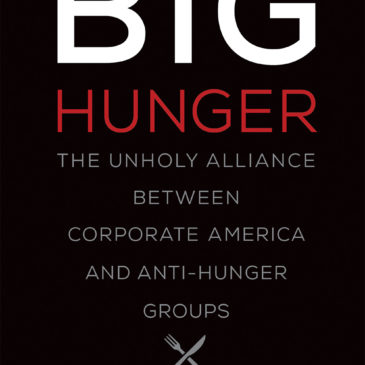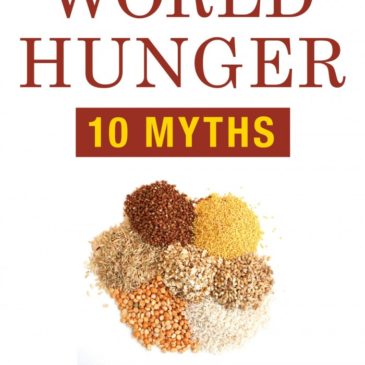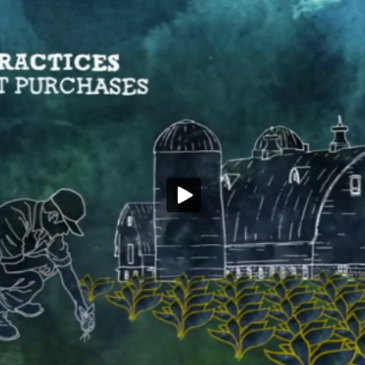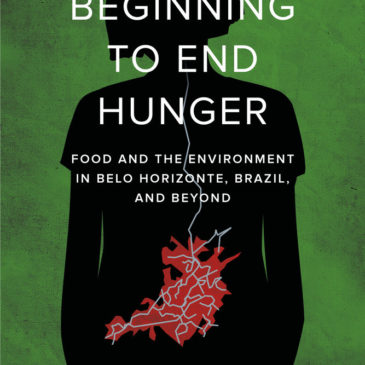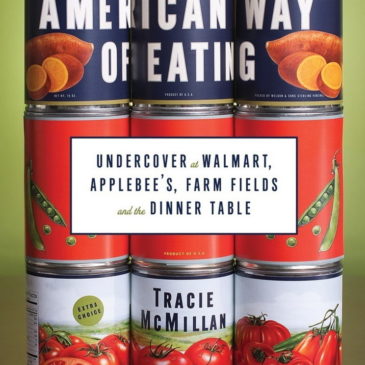“Hunger isn’t caused by a scarcity of food, but a scarcity of democracy.” – Frances Moore Lappé
We are bombarded with messages intended to frighten us about the world’s ability to feed itself: how will we feed a growing population, expected to reach 9 billion in 2050? Big Food and agribusiness corporations claim we need to double crop production to stave off hunger, and they’ve got just the answer: more fertilizers, pesticides, and genetically modified crops.
There’s a big problem with this argument: it’s based on the idea that hunger is caused by a lack of food. Frances Moore Lappé debunked this myth over forty years ago through pioneering research showing that people were going hungry despite a global food surplus. Why? Because hunger is not caused by scarcity; it’s caused by maldistribution, poverty, and a lack of democracy.
Today, the situation is remarkably similar. Even after diverting much of the world’s grain and soy to animal feed and non-food uses like biofuel, the world produces about 50 percent more calories than is needed to feed every person on earth. You read that right: we have more than enough food. And yet, roughly 800 million people go hungry. At the same time, about 2 billion people are overweight and sick from consuming too many calories from nutritionally empty processed foods and sugary drinks.
Doubling down on the current industrial food system will not solve hunger or a growing public health epidemic—just the opposite. Industrial food has robbed our diets of their nutritional value, and industrial agriculture has stripped our farming systems of their biodiversity. Continuing with the status quo will only worsen inequality, ill health, and the devastation of the natural resources we depend on for food security.
From seeds to food brands, the massive increase in multinational corporations’ control over the food system over the last 50 years matters. It means, for example, that agribusiness dictates what many farmers around the world now grow and how they grow it based on global commodity prices—not what’s best for local economies or food security. It means that large retailers dictate what kind of food is available—privileging uniformity, shelf-life, and the biggest producers who can pay expensive shelving fees over smaller operations, nutrition, and taste. And it translates into political power to keep wages low and block protections for the 21.5 million workers in the US who bring food to our tables, but experience high rates of poverty and food insecurity.
Globally, the hungry are mostly farmers and mostly women (indeed, the World Food Program estimates that giving women farmers greater access to resources like land could reduce global hunger by 100 to 150 million people). At home and abroad, communities of color and the working poor are disproportionately affected by hunger. Anti-hunger programs like food banks, while playing an important role in emergency food assistance, are a stopgap solution: they are often heavily allied with big corporations and do little to tackle the root causes of hunger.
If hunger is caused by a lack of democracy, not a lack of supply, then solving it will require tackling those root causes. That’s why fighting for economic justice while dismantling racism, patriarchy, and other systems of oppression is key to ending hunger. And it’s why building sustainable food systems that view food as more than a source of calories—but rather a source of livelihood, culture, and community—is also essential to creating a world without hunger.

